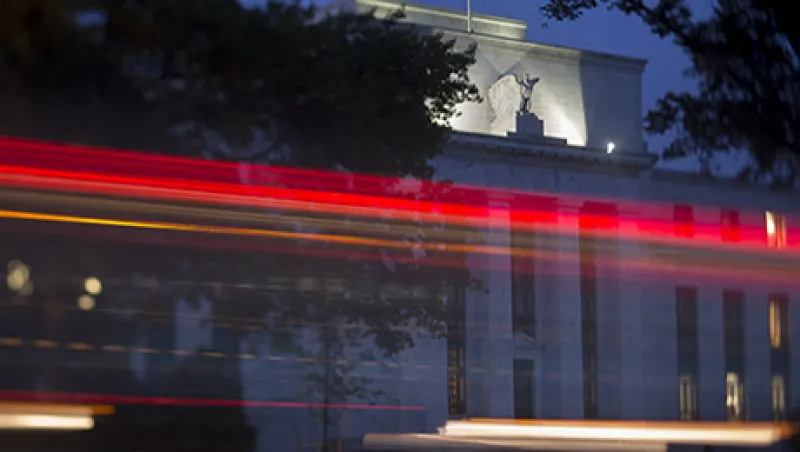Despite the doubt in the market, there is a good chance rates will go up this week. The market may be expecting the Fed not to raise rates, but with U.S. economic fundamentals as robust as they are, there’s really nothing preventing the central bank from acting. We at J.P. Morgan Asset Management believe the three conditions that needed to be in place for a rate rise have all been met. These include: strong U.S. economic data releases, a response from Chinese policymakers in light of the recent turmoil in emerging markets and declining volatility of U.S. financial assets, such as equities and credit spreads. Add these three conditions together, and we think there’s good reason for the Fed to pull the trigger and raise rates this week.
But let’s not forget the two moving parts investors have to keep in mind. Aside from an actual rate hike, there’s all the associated commentary to which investors should pay close attention. The Federal Open Market Committee’s press conference this week will provide much-needed context to an interest rate hike — should there be one — and to all the buzz surrounding it. The Fed will be particularly cautious with regard to hints of future increases and will no doubt emphasize that future rate rises will be gradual. This would be the first rate rise in ten years and is thus going to be a big event for markets. The Fed will therefore have to be incredibly cautious about how it guides markets going forward, which should help to reassure fixed-income investors.
We see two consequences of a rate hike this week — if it happens. First, the yield curve will flatten, meaning that long-dated bonds will outperform shorter-dated ones. When there’s an interest rate hike, the bonds that suffer most are those nearest the interest rate. Accordingly, one would expect two-year bond yields to go up more substantially than yields on ten-year bonds. The second consequence is the effect on corporate bonds, with high-yield bonds likely to perform strongly and outperform government bonds. Investors should therefore think about having some exposure to high-yield bonds.
The other twist here is that with all eyes on the Fed’s next move, it’s easy to forget the bigger, global picture. If we look at what’s going on in Europe, where there’s still quantitative easing taking place, European high-yield with a yield of 4.75 percent seems a pretty attractive proposition. Fixed-income investors should therefore not just be thinking about what’s going on in the U.S. but also be keeping Europe in front of mind. The risk faced by the European Central Bank is very different from that of the Fed, and ECB president Mario Draghi is likely to ease monetary policy further with additional quantitative easing. This has been hinted at because inflation is so low. Reducing the 2016 inflation forecast to 1.1 percent, down from 1.5 percent, suggests the ECB will have to loosen monetary policy even more, which is likely to be welcome news for European bonds.
Nick Gartside is the international chief investment officer of fixed income and co-manager of multisector fixed-income products at J.P. Morgan Asset Management in London.
Get more on macro.






